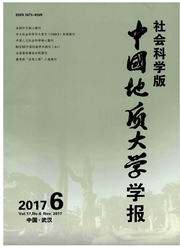

 中文摘要:
中文摘要:
中国的城市化水平已超过50%,城镇化率赶上了世界平均水平。中国已经进入城市型社会,但还处在城市社会的初级阶段。这是构建新时期、新阶段中国城市化道路、方针、政策和战略框架的基本依据。从世界历史看,城市化是通向现代化的必由之路,但也与大量失去生产资料和生活资料的自由劳动者的出现紧密相连。改革开放以来,中国城市化发展迅速,成功避免了其他国家高速城镇化过程中时常遇到的大规模城镇失业和贫困,但累积了诸多矛盾和问题。与其他国家相比,未来的城市化道路必须把握四大战略基点:城市社会的城市化、大国的城市化、发展中国家的城市化以及直面历史问题和化解累积风险的城市化。
 英文摘要:
英文摘要:
China's urbanization level has exceeded 50% and the urbanization rate has caught up with the world average. Although on its primary stage, China has entered into the urban society. This is the fundamental basis for establishing urbanization path, policy and strategic framework in the new era, new stage. As is shown in global history, urbanization is an inevitable approach to modernization, though it is interrelated with the emergence of a large number of free labors that had lost their means of production and subsistence. Since the reform and opening up, China's urbanization has developed rapidly and succeeded in avoiding issues of large-scale unemployment and poverty that often encountered in other countries. Unfortunately, contradictions, problems and conflicts accumulated increasingly. The future path to urbanization has to be stood on the overwhelming strategic locations in comparison with other countries: the urbanization of the urban society, the powers, the developing countries, the sunk problems solved, as well as the potential risks defused.
 同期刊论文项目
同期刊论文项目
 同项目期刊论文
同项目期刊论文
 期刊信息
期刊信息
